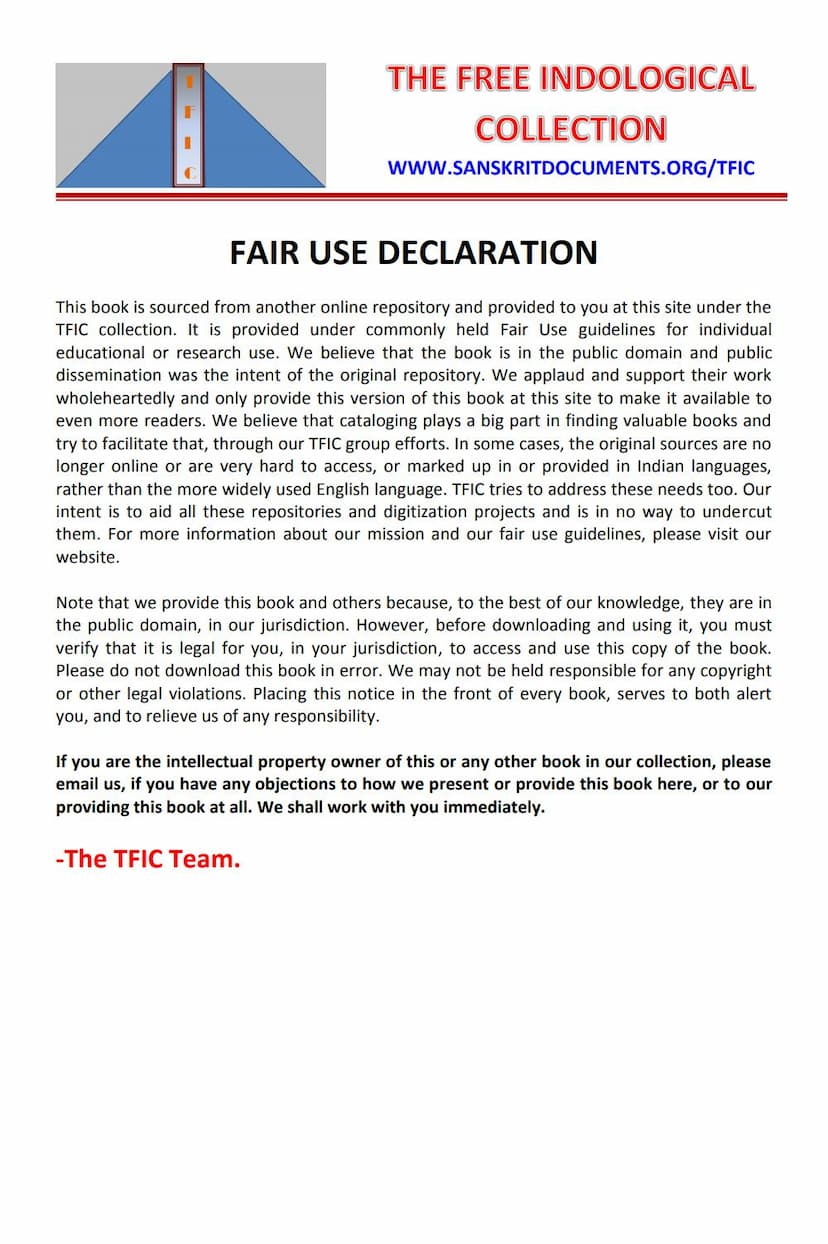Jain Shila Lekh Sangraha 05
Added to library: September 2, 2025
Loading image...

Summary
This document is the fifth volume in the "Jain Shila Lekh Sangraha" (Collection of Jain Inscriptions) series, edited by Vidyadhar Johrapurkar and published by Bharatiya Jnanpith.
Key Highlights:
- Purpose: This volume aims to compile and present Jain inscriptions published after 1960, following previous volumes that collected inscriptions from various periods and locations.
- Content: It contains 375 Jain inscriptions, analyzed and presented chronologically.
- Geographical Spread: The inscriptions are found across nine Indian states and two Union Territories, with one inscription's image originating from the Paris Museum.
- Languages and Scripts: The inscriptions are in Prakrit, Sanskrit, Kannada, and Tamil. The scripts used are Brahmi (for inscriptions up to the 7th century) and its successors, Nāgarī, Kannada, and Tamil.
- Themes: The inscriptions primarily describe:
- Construction of caves and temples.
- Commemoration of the sallekhana (vow of holy death) of ascetics and lay followers.
- Donations made to Jain temples and ascetics.
- Installation of idols.
- Miscellaneous religious activities like Vrata Udyapana (completion of a religious vow), construction of donation halls, wells, and resolutions of disputes between Bhattarakas (Jain pontiffs).
- Chronology: The inscriptions span from the 2nd century BCE to the 19th century CE, with some undated inscriptions included.
- Key Findings/Contributions mentioned in the editorial and preface:
- Inscriptions from Pala (Pune) confirm the existence of Jain ascetics in Maharashtra as early as the 2nd century BCE.
- Inscriptions from Sonagiri (Datia) establish the antiquity of the site up to the 7th century CE.
- The Vazirkhed copper-plates provide evidence of the Dravida Sangha's existence in Maharashtra and a Jain temple established in the name of Emperor Amoghavarsha.
- Inscriptions from Devagarh (Jhansi) highlight the antiquity and popularity of the site.
- Inscriptions from Kolanupak (Andhra Pradesh) confirm the antiquity of the pilgrimage site up to the 9th century CE.
- Inscriptions from Chittorgarh shed light on the family of Sah Jija, the founder of the Kirti Stambh.
- Inscriptions from Rampura provide detailed information about the family of Diwan Pathusha.
- Inscriptions from Ukhalad provide significant material for the history of Jain Bhattarakas active in Maharashtra in the 16th-17th centuries.
- Overall Contribution: The series, including this volume, has collected over 2000 Jain inscriptions, providing valuable resources for research into Jain literature and history. The editor, Dr. Vidyadhar Johrapurkar, is credited with diligent collection and analysis of these inscriptions.
This volume continues the important work of making Jain epigraphical records accessible to scholars and enthusiasts, contributing significantly to the understanding of Jainism's historical development, its monastic traditions, and its societal impact.